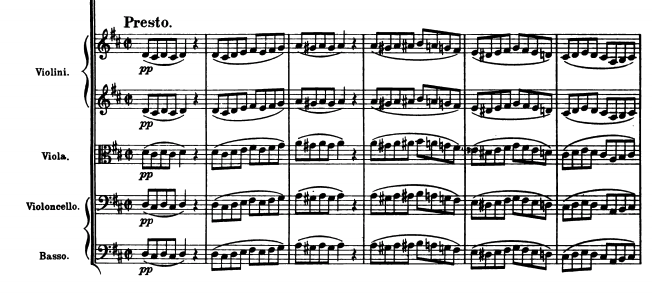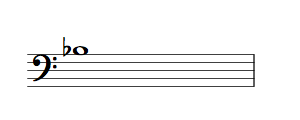Contrabasses – do right by them
The basses are one of the most ill-understood instruments of the orchestra; pigeonholed to pages of footballs and rests. Yet, their orchestral origin was nearly identical in intent to the cellos – as for most of the baroque and classical era they were doubling each others parts at the octave.
Now consider that modern bassists have all played and studied the continuo parts of the Bach Cantatas and the Mozart Symphonies.

They are more nimble than given credit for and can usually handle much more than what is commonly put on the page for them.
Cello + Bass at the Octave is a thing
This doubling always works – high in the range, low in the range, soft, loud, pizz- it just sounds good 100% of the time. Keep them exactly tutti, don’t break the octave to get a low b for example. The lower tones of the piano can confuse the composer (as all of a sudden they get boomy), but remember when the basses play it sounds low. When they play very low it sounds super low.
The Low C string isn’t the sweet spot (imo)
I’m calling it the low C string because 99% of professional basses have the C extension, or if you are in central Europe they may have the 5 string instrument with the low B – and feel free to write for it if they do have it!
This is opinion only, but I feel many composers write bass parts too low. To my ears the low C string blends the least out of all the 16 strings in the section. To my ears it can often sound more like a brassy, synthy patch than a blendy, warm string patch. At forte or above it is very sticky-outy -timbre wise.
Therefore I suggest to focus your efforts in this range:

Even on this written Bb the basses will “anchor” the string section. They are huge instruments, and the math and physics of the instrument make all their notes “sound” low – regardless of what the piano shows you.

As a composer leave yourself space to go into the low- low range to follow a line – or to use a new color – don’t just use it for no reason.
The low C string just becomes so tiresome when one always hears it. To my ears it just makes the string section sound smaller.
Note: Below the low E – be careful writing stuff too fast or busy here. There is a lot of “fret” real estate to cover.
The strongest transient in the entire string section is the bass snap pizz. I was recently at a scoring session at Warner Brothers and the conductor was very effectively adding snap pizz. contrabasses to beef up huge stabs and it worked very well. It almost drowns out the entire ensemble – they can really blast it.
Announce your preference: Balance The Basses
There are some wonderful and confident bassists in Los Angeles – and when situated in certain rooms they can overwhelm the sections near them (especially if the writing is too low).
To fix this you can have the string section hit and hold a chord and balance it on the spot and then ask them to “preserve that balance”. I do this sometimes with the first violins also, I prefer a democratic relationship between the string sections ( I don’t want any of them to have more power than the others – sounds more tutti to my ears that way – aka I don’t want anyone sticking out.)
In general I find the orchestral forte convincingly loud – I like to save the heavy stuff for special moments or hold it in reserve.